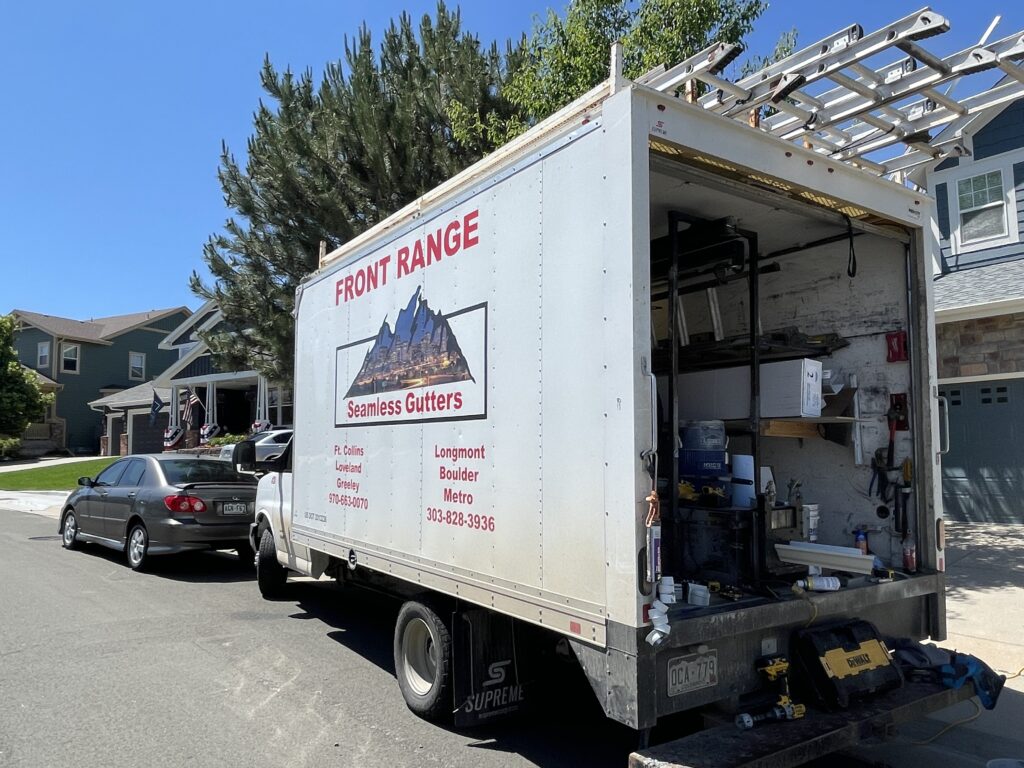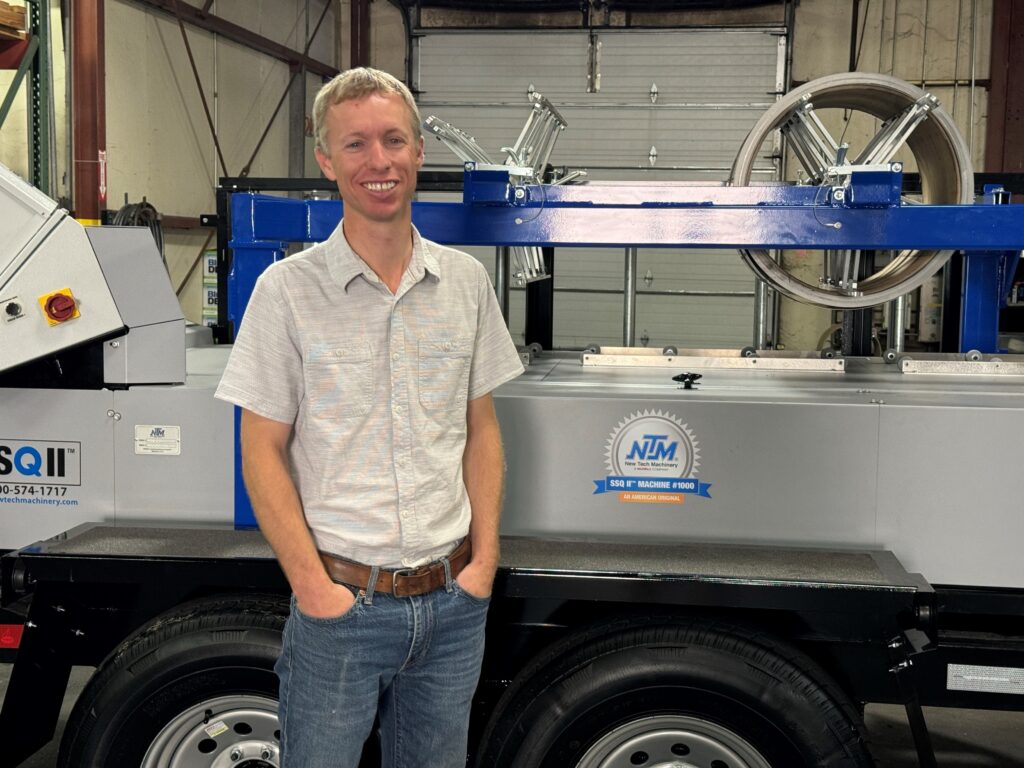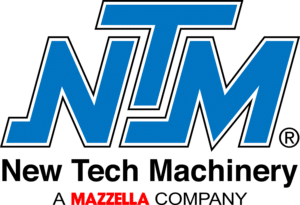How to Avoid Buyer’s Remorse When Purchasing a Portable Rollformer
Read this before you sign on the dotted line.
Imagine buying a house before checking to see if it’s large enough for your family. Or purchasing a sports car when what you really needed was a pickup that could haul a trailer. You’d live to regret it, right? It’s no different buying a portable rollformer; you don’t want to end up feeling buyer’s remorse because you didn’t get the one you needed. And we’re talking about tens of thousands of dollars—for a mistake!
Unfortunately, buyer’s remorse is real, and it often comes down to one simple factor: Not understanding what you’re buying.
At New Tech Machinery (NTM), we’ve seen it all. So we got our account managers together and talked through common issues that can lead to buyer’s remorse.
Let’s break it down and give you a few key steps to help you make the right decision—and avoid buyer’s remorse.

1. Actually Read the Portable Rollforming Machine Materials
One NTM customer was ready to purchase an SSR™ MultiPro Jr. Roof Panel Machine. The standing seam profiles it could produce fit his business needs. He excitedly told his NTM account manager how he planned to run 20” wide panels for his next big job.
“Wait a minute,” the account manager said. “The SSR only runs up to 16” wide panels. You need to step up to our SSH™ MultiPro to run 20” panels.”
That’s how close he came to buying the wrong machine for his needs. Even though the panel size range was listed on the SSR specs sheet and New Tech’s website, he hadn’t read the specs carefully. Had he purchased the SSR he wouldn’t have been able to run panels for that big job, so the machine wouldn’t have done him much good.
The lesson: Before you get too excited about the possibilities, make sure you fully understand what the machine does—and doesn’t do. Whether it’s a product brochure, machine quote, spec sheet, or financing agreement, don’t skim. Read.
Read the information we send to you and ask questions if you don’t understand it.
—Hayley Bohmer, NTM Account Manager.
We send out a ton of resources to help customers make informed decisions, including articles and videos, and price and spec sheets. Our website has detailed information about each of our machines. It’s all designed to walk you through machine specs, profile options, accessories, maintenance needs, and more. Why not use it to your advantage?
2. Ask Questions Early and Often
If anything is unclear, speak up. There are no bad questions. We’d rather you ask a hundred questions up front than call us two months later frustrated because the machine doesn’t do what you thought it would.
We want you to understand exactly what you’re getting—and what you’re not. That’s where questions come in.
—Tom Laird, NTM Senior Account Manager
Whether it’s about coil width, profile compatibility, required accessories, or power needs—don’t leave any details unchecked.
3. Read What You’re Signing
This might seem obvious, but you’d be surprised how many people skip this step. Contracts, quotes, warranty agreements, delivery requirements, and purchase orders include important details that affect your business long-term. Things like:
- Lead times
- Payment terms
- What’s included (and what’s not)
- Cancellation policies
Better yet, read what you’re signing.
—Thomas Campbell, NTM Account Manager
Seriously—take five or ten minutes. Read every section. Confirm the price, the profile, the voltage, the accessories. If you’re unsure about something, don’t guess. Reach out.
4. Make Sure It’s the Right Portable Rollformer for the Job
What if you purchased a Mach II 5” Portable Gutter Machine just when 6” gutters started taking off in your area? Would you have buyer’s remorse?
Study your market. You want to meet your customers’ needs.
Also, not every contractor needs the most advanced, multi-profile machine on the market. And not every project is suited to a basic model. Knowing your business needs (and your growth plans) will help you to the right choice.
Consider:
- What profiles do you plan to run?
- How often will you use the machine?
- Do you have trained operators?
- Will it need to travel often or stay in one place?
- Do you have the capabilities to perform service and maintenance on the machine?
If you’re not sure where to start, talk with an account manager. They’ll walk you through your options based on your projects and future plans.

5. Understand the Portable Rollformer Accessories and Setup
Accessories like reel stands, run-out stands, coil cradles, and shears can dramatically impact your workflow. But not all accessories are compatible with every machine or profile.
Make sure you understand:
- Which accessories are included
- Which ones you’ll need to purchase separately
- How the machine should be configured before it leaves the factory
Getting it right up front means less downtime and more production once it arrives.
6. Have a Plan for Your Portable Rollformer
In the early 2000s, a media buzz started in anticipation of the release of a revolutionary new product. The build-up was phenomenal, but once released, sales for Segway’s Personal Transporter didn’t meet expectations. It turns out, folks weren’t interested in paying $5,000 for a bulky twin-wheel machine that didn’t seem fit for the sidewalk or the street.
The lesson: Before you purchase a machine, have a plan. Have you already built a customer base? Is there demand in your area for metal roofs or seamless gutters?
A build-it-and-they-will-come approach to business is a huge gamble. Segway later released electric kick scooters that fared much better, having sold 13 million worldwide. Chances are, they learned to focus on market research.
Also, think about where you want your business to be in a few years. Planning to expand from metal roofing into siding? Then you’ll need a machine that can run more than standing seam profiles. Or say you’re not doing many jobs now but expect to be very busy using your machine for chop-and-drops on top of your own contract work. You might want to spend a little extra on a machine with a hydraulic shear to handle that kind of workload.
Analyze your business needs today and what you will need down the road. You don’t want to buy an SSQ II™ MultiPro that can run 16 roof and wall panel profiles when all you ever run is 1.5” mechanical seam. On the other hand, you want to be prepared for growth if you see an expanding market in your area.

7. Portable Rollformer Training
Would you purchase a single-engine plane without ever having flown before? Would you skip taking flight lessons and try to take off anyway?
Having a machine you don’t know how to use is a waste of time and money. It takes some machine skill to make adjustments, operate the controller, load coil, and maintain your investment.
Training is free to all new machine owners at our facility in Aurora, Colorado. For a fee, we can train at your location. Either way, it’s worth a flight ticket and a hotel room. In fact, bring your whole crew. That way, you ensure that your workers know how to correctly operate your new portable rollformer.
After the Portable Rollformer Purchase: No Surprises, No Regrets
The number one cause of buyer’s remorse in the portable rollforming world? Not knowing what you’re getting or what you need.
So if we had to sum it up, it’s this:
- Read the information
- Ask questions
- Read what you’re signing
- Know your market
Take these steps seriously, and you’ll avoid frustration, delays, and unnecessary costs. And when your machine shows up ready to work, you’ll be glad you took the time to get it right.
Need help or have questions? Our team is always here to guide you through the process and make sure you’re confident in your decision. Contact us to speak with an expert account manager.


